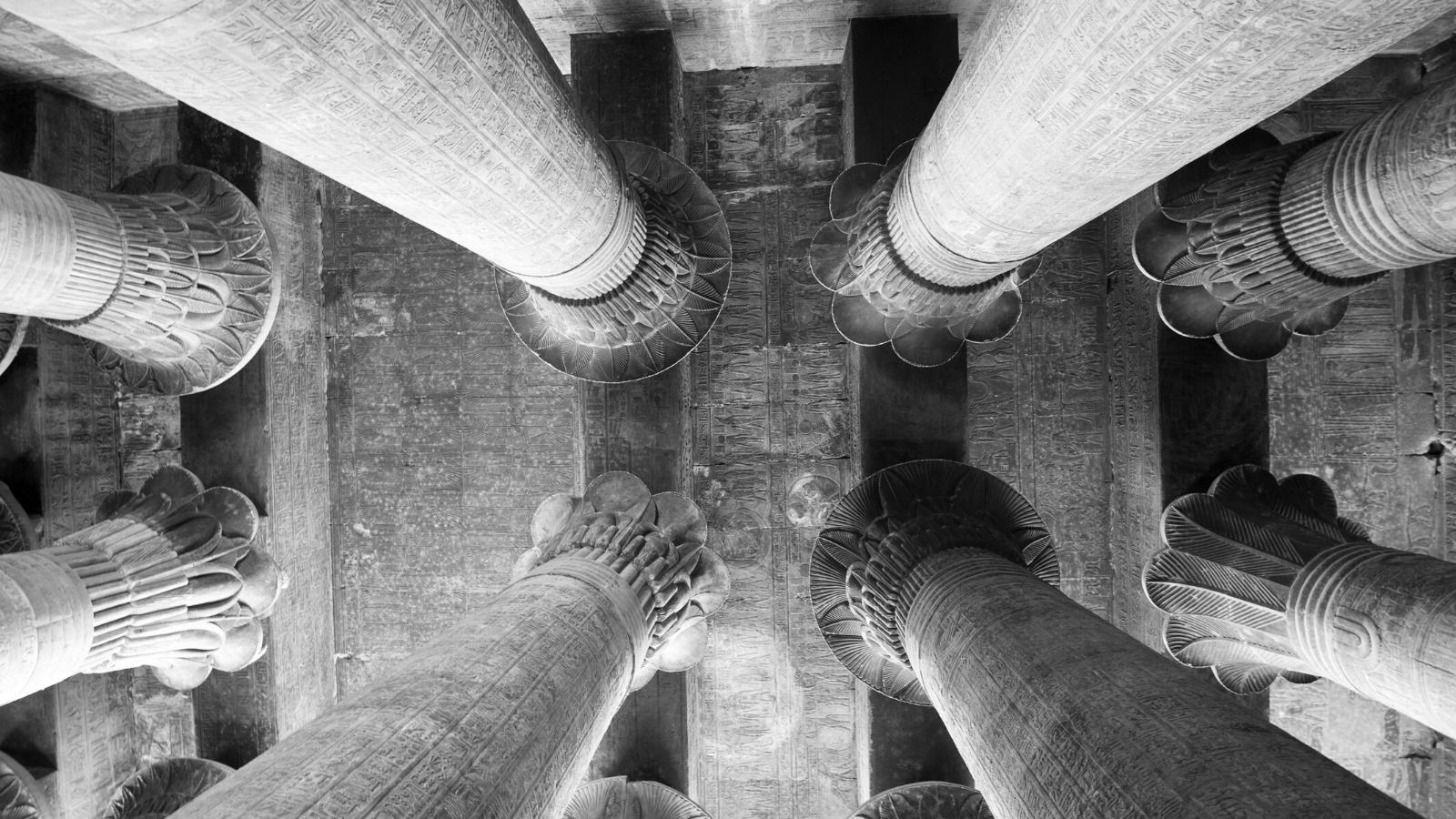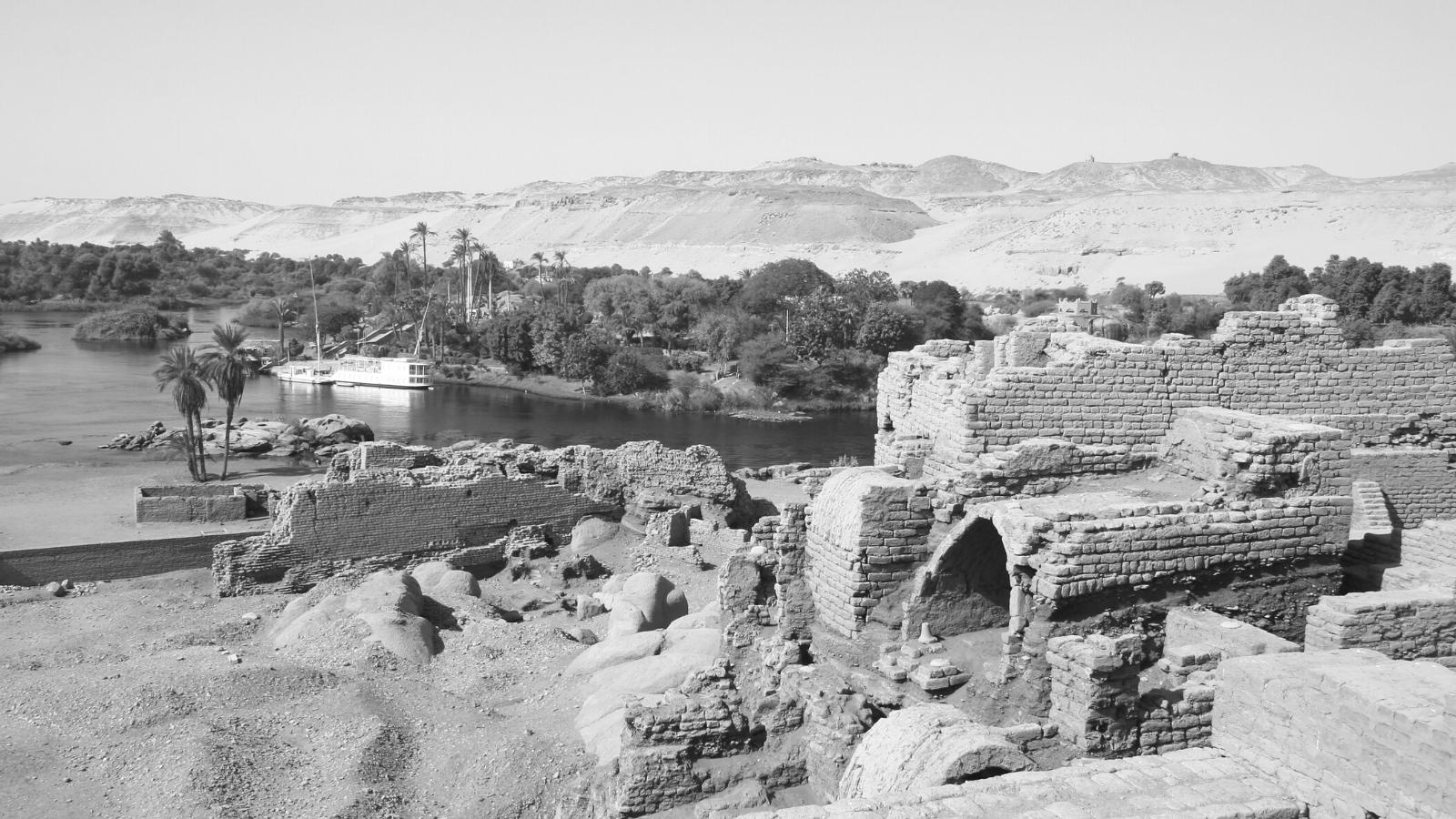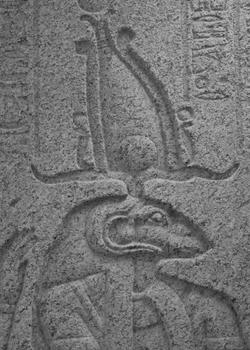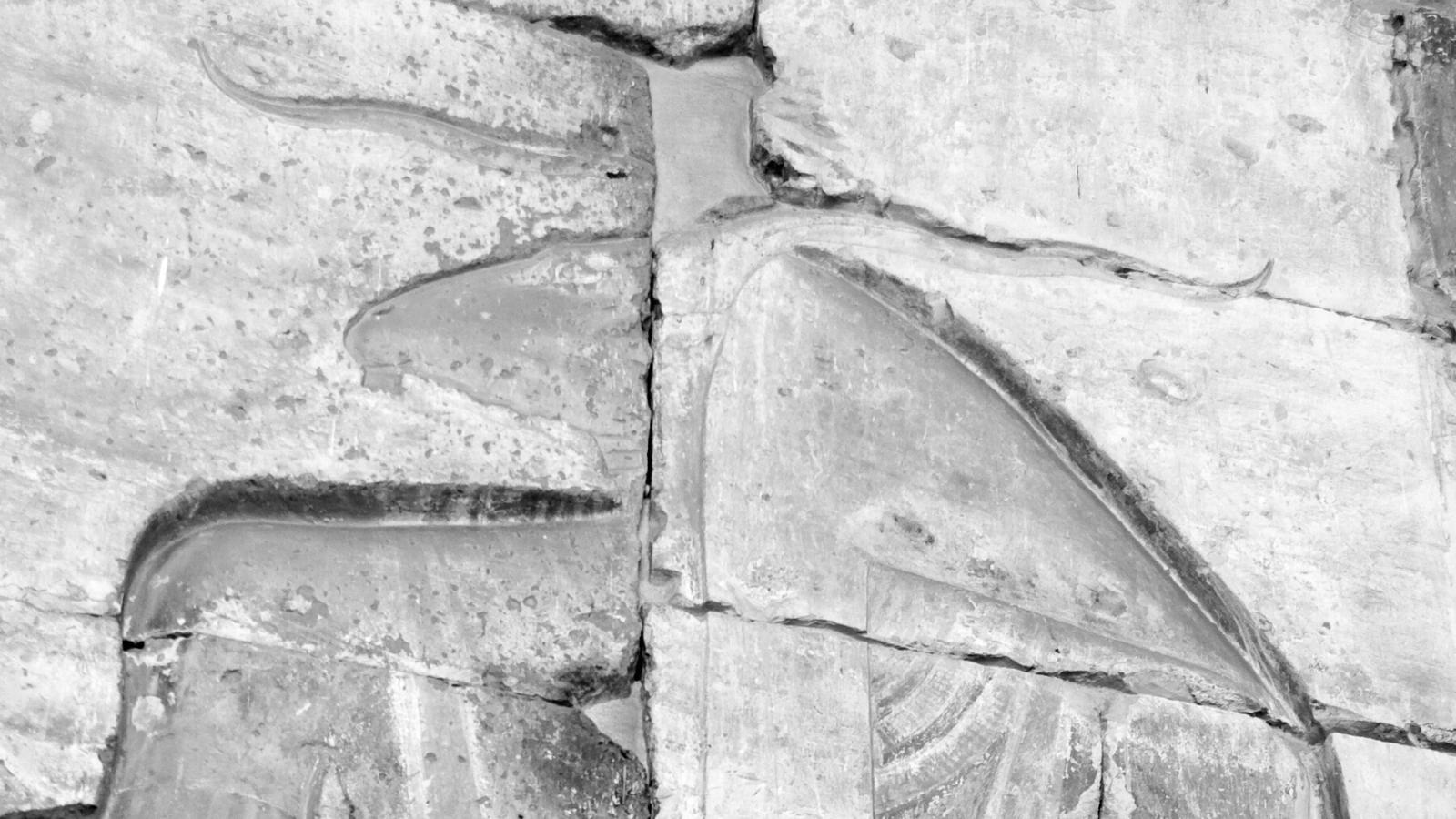Khnum: His Mythology and How He Became the Most Worshiped Deity
Khnum was the god of the Nile who was worshiped in Elephantine and the city of Esna. His recognition and worship began in the Old Kingdom, where the ancient Egyptians thought of him as the creator of mankind and worshiped him as such.
His worship became less popular when Ra was introduced to the Egyptian pantheon. Continue reading to find out how.
Who Is Khnum In Egyptian Mythology?
The Egyptian god Khnum, according to Egyptian mythology, was a god who formed babies and placed them inside their mothers’ wombs. The material he used in forming the children was clay.
Khnum, also called Khnemu, made the children with the help of a potter’s wheel. Thus, his followers nicknamed him the divine potter.
The Pronunciation and Meaning of Khnum
The pronunciation of Khnum depends on the language. In English, the name is pronounced without the ‘kh’ at the beginning, so it sounds like “num.” However, in Egyptian Arabic, the ‘kh’ is pronounced as ‘ka’ together with the ‘num.’
The meaning of the names of ancient deities was closely guarded secrets of which only the cults knew the meanings, so the exact meaning of Khnum is unknown. Nevertheless, scholars inferred the meaning of the name from hieroglyphs. In Egyptian hieroglyphs, Khnum meant “to unite.”
The Origin and Spread of the Worship of Khnum
The worship of Khnum dates back to long before the Dynastic Period, according to existing records. Khnum’s identity began as a water deity during the first dynasty.
He was thought to be the guardian of the source of the Nile and all other bodies of water above and beyond. His worship started in the Middle Kingdom city of Herwer in Upper Egypt, where the people of Herwer saw Khnum as the protector of the city, earning him the name Lord of Herwer.
As the god of Nile, Khnum was responsible for the fertility of the Nile delta. This happened when the Nile receded after the annual floods, leaving behind black silt. This type of soil was essential for plant growth, and farmers took advantage of this to grow their crops. Black silt was also the raw material for clay, so the Egyptians began to associate Khnemu with pottery.
In Herwer, the people worshiped him alongside Heqet, the goddess of fertility. The worship of Khnum soon spread across several other cities, including Elephantine and Esna. Both cities became the centers of Khnum worship and built beautiful temples in his honor. His worship continued to spread and engulfed the whole of Egypt during the Dynastic Period.
Khnum and Khufu
According to The Pyramid Texts of Unas, Khnum was associated with the Pharaoh of Egypt. These texts were inscriptions of events carved into the Pyramid of Unas, a king of Egypt.
The inscriptions revealed that the Egyptians associated Khnum with Khufu, a pharaoh of the Old Kingdom. He was named Khnum-Khufu which meant “Khnum the protector of Khufu.”
Temple of Khnum in Elephantine
The Egyptians built the temple of Khnum at Elephantine in the Middle Kingdom. There, the people worshiped three gods who were known as the Triad of Elephantine, including Khnum. The other members of the triad were Satis and Anuket. Not much is known about Khnum’s Elephantine temple, but records indicate that the temple was still in use during the New Kingdom.
Temple of Khnum in Esna
The temple of Khnum in Esna was more popular than the one in Elephantine. King Ptolemy VI Philometer, a Greek king of Egypt, started the temple, but the Romans were the ones to complete it. The Roman General Marcus Aurelius built a structure that linked the temple to the Nile.
Details of the Temple of Khnum in Esna
The structure, known as a quay, was to help load and unload passengers who came to worship at the temple. The temple had a doorway that led to a chamber consisting of 18 pillars beautifully decorated with floral capitals.
The pillars also had hieroglyphs carved into them, which gave the details of rituals at the temple. One pillar features the Roman Emperor Trajan dancing before the lion-headed goddess Menheyet.
The roof of the temple was divided into two featured scenes. One scene featured astronomical figures of ancient Egypt, and the other depicted signs of the Roman Zodiac. On the north wall of the chamber was a carving that depicted the king capturing a wild bird, which was a representation of foul spirits.
Written on the walls of the temple were two hymns, each dedicated to Khnum. One hymn was sung to awaken Khnum and the other was sung to praise him. On the northern wall were depictions of Roman Emperor Commodus fishing with Khnum in a papyrus bush. Another depicted him presenting the temple to the god Khnum.
The Temple Through the Years
Two Greek Pharaohs, Ptolemy VI Philometor and Ptolemy VIII Euergetes, had their reliefs carved into the northeast back wall. Some Roman Generals also inscribed their names to the gateway leading to the back. The temple of Khnum in Esna is a tourist attraction site in Egypt today. Its history, reliefs and paintings continue to attract scholars and tourists alike.
Other Places Where Khnum Was Worshipped
The temple of Beit-el-Wali in Nubia featured a Khnum statue along with the statues of other gods. This meant there was a cult of Khnum in the region. Other places that witnessed the worship of Khnum included Tuna el-Gebel, which was called Necropolis of Khnum. At Tuna el-Gebel, Khnum’s wife was Meskhenet, the goddess of childbirth who breathed life into the children molded by Khnum.
The Depictions and Symbols of Khnum and Their Meanings
The ancient Egyptians depicted Khnum as a man with the head of a ram. This illustration signified his role as the god of fertility, as ancient Egyptians associated rams with fertility, thus they had various fertility gods depicted with a ram’s head. Khnum’s horns were horizontal, which symbolized the rams of that era.
Unfortunately, rams with horizontal horns went extinct, but the image of Khnum’s horns remains unchanged. His head was painted green, which signified vegetation and new life. With this, Khnum was responsible for the annual inundation that supported plant life. His skin was painted reddish-brown, probably to reflect his role as a potter.
Khnum held in his left hand the key of life, or the key of the Nile called an ankh, which signified his role as the god of the Nile and creator of mankind. In his right hand was a staff. Later depictions show Khnum sitting at a potter’s wheel, which became known as Khnum potter’s wheel. The notion was that he was molding infants and getting ready to place them in their mothers’ wombs.
Other Paintings
Some paintings also had Khnum sitting and holding a jar from which water poured out. The water was the River Nile, signaling Khnum’s power over it. Around his neck was an aegis that symbolized his authority over creation. Another showed him seated with the goddess Heqet helping him to create humans.
The Relatives of Khnum
As is common with Egyptian mythology, the worshippers of Khnemu in Elephantine gave him the goddess Sati as a wife. Sati, together with Khnemu, were both deities of fertility. The two deities gave birth to Anuket, the goddess of the Nile river. Khnum’s followers at Esna named Menhit, goddess of war, as the wife of Khnum.
At Esna, Khnum had another wife named Nebtu, who was the goddess of the cosmos. Heka, the god of magic, was the son of Khnum and Nebtu. Other myths also paired Khnum with Neith, a goddess of hunting. Khnum and Neith gave birth to another goddess of fertility called Herkert.
How Ra Overtook Khnum To Become the Most-revered Deity in Egypt
During the reign of the Pharaoh Khufu, the worship of Khnum was at its peak. As already discussed, he even added Khnum to his name. However, when he died, the popularity of Khnum began dwindling as the worship of Ra as the main god gained traction. The worship of Ra began in the Second Dynasty, where he was revered as the sun god.
Slowly, his cult began to grow, and by the 5th Dynasty, Pharaohs were associating themselves with Ra. Ra assumed more responsibilities and roles apart from being the sun god. They built several monuments in his honor, including obelisks and pyramids. The Pharaohs of the 5th Dynasty then started to refer to themselves as Sons of Ra.
They gave Ra more significant roles in the journey of the Pharaoh through the underworld. More temples were built to worship the sun god as Khnum was gradually relegated to the background. Interestingly, the first Pharaoh to ditch Khnum for Ra was Khufu’s son, Djedefre.
Djedefre
Djedefre was the first Pharaoh to use the title Son of Ra, and, unlike his father, Djedefre did not add Khnum to his name. Instead, he added Re, another name for Ra, to his name, calling himself Khaf-Re. That was how Khnum’s worship dwindled, giving way to the worship of Ra as the main deity throughout Egypt. However, it was commonly known that Khnum was the father of Ra and was worshiped as such.
The Importance of Khnum in Egyptian Mythology
Khnum was essential to the Egyptian creation myths, as the Egyptians believed he made the first egg from which the sun and creation emerged. He was also responsible for creating humans and maintaining them during their time on earth. He also created souls and deposited them in the humans.
Khnum had the power to bless his people with wealth while he molded them at the potter’s wheel. An artwork depicting Khnum creating the female Pharaoh Hatshepsut can be found in the temple of Hatshepsut. Khnum also created the universe with the help of Ptah, the god of craftsmen, and Thoth, the god of wisdom. Khnum created the other gods according to Egyptian tradition.
Father of Fathers
Due to his role in creating the gods, Khnum received the title Father of Fathers. According to his cult in Esna, Khnemu created Shu, the god of air, Geb, the god of the earth, and Osiris, the god of the underworld. As already discovered, Khnum was essential to plant life in ancient Egypt. He was responsible for the yearly flooding of the Nile that left behind fertile plants.
Without this all-important power, life in ancient Egypt would be unbearable. In the years that the Nile refused to flood, great famines hit the land of Egypt, which claimed many lives. Khnum was also in charge of male fertility, which was the reason behind his earlier depiction as a ram.
The Forms and Titles of Khnum
Egyptian mythology depicted Khnum as having seven forms, which are:
Khnum the Creator
Khnum the governor of the two lands
Khnum the governor of the House of Sweet Life
Khnum the governor of the House of Life
The Lord Khnum
Khnum the weaver of his light
Khnum the Lord of the Land of Life
Summary
We’ve gone over the origin, roles, temples and powers of the creator god Khnum.
The worship of Khnum began long before the dynasties of Egypt started.
At first, he was the god of the Nile, but he eventually became the main god of Egypt.
Khnum molded humans at his potter’s wheel, gave them souls, and placed them in their mothers’ wombs.
As a national god, Khnum was worshiped in several cities, including Elephantine and Esna.
At Elephantine, he had one wife, Sati, and a daughter Anukhet, while he had two wives and two children in Esna.
Khnum’s role also involved creating the sun and several other gods, including Shu and Ra.
The Egyptians depicted Khnum as a ram-headed god seated with a jar of water pouring out of his hand.
Eventually, the worship of Khnum as a national god was abandoned for Ra.
Khnum was one of the most important gods in the ancient Egyptian pantheon. His role ensured that there was enough food for the Egyptians throughout the year, and he was also responsible for ensuring the wellbeing and safety of humans — both in this world and the underworld. As such, Khnum’s role in Egyptian mythology could never be overstated.














